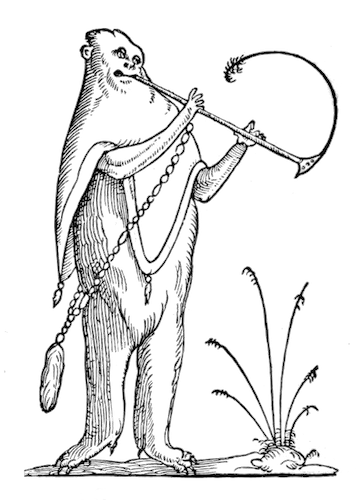 Scroll through the whole page to download all images before printing.
Scroll through the whole page to download all images before printing.3D visual of the proposed high-security prison in French Guiana from a handout released by the French Ministry of Justice — Source (not public domain).
This week, minister of justice Gérald Darmanin announced that France will build a high-security prison in French Guiana for the purposes of holding “radical Islamists” and drug traffickers. Slated to open as early as 2028, the facility will house 500 inmates (some of whom may be flown over from France), cost $450m (£337m), and be located deep within the Amazon jungle in the commune of Saint-Laurent-du-Maroni, the former port of entry for the infamous Devil’s Island penal colony. The overseas penitentiary is a response to recent gun and arson attacks that have targeted French prisons in Europe. By distancing inmates from domestic organized crime rings, France hopes the prison will serve as a strategic “crossroads” for drug mules from South America and allow for a greater control of inmate communications with the outside world. There has been notable pushback from locals and French activists. French Guiana member of parliament Jean-Victor Castor denounced the proposal in a statement released on Sunday: “It’s an insult to our history, a political provocation and a colonial regression.”
 Scroll through the whole page to download all images before printing.
Scroll through the whole page to download all images before printing.1908 illustration of Devil’s Island — Source.
In 1852, during the reign of Napoleon III, the Devil’s Island penal colony opened off the coast of Cayenne in French Guiana. It contained labor camps and prisons for the worst criminal offenders in France as well as innocent political prisoners, such as Alfred Dreyfus. The mortality rate was high: at its peak, 75 percent of inmates perished from a combination of violent treatment and tropical disease. Scholars suspect that Kafka’s nightmarish story “In the Penal Colony” was partially inspired by stories circulated about Devil’s Island. During the century of its active operation, some 80,000 prisoners were sent across the Atlantic to this island. The vast majority never left. Operations eventually ceased, due, in part, to the 1938 publication of Dry Guillotine (la guillotine sèche, a prisoner nickname for the island) by René Belbenoît — an inmate who eventually escaped — which detailed the horrific conditions of imprisonment. Henri Charrière’s Papillon (1969), a novelistic account of its author’s (potentially fictitious) confinement — adapted into a 1973 film featuring Steve McQueen and Dustin Hoffman — further publicized the brutal ordeals faced by prisoners.


